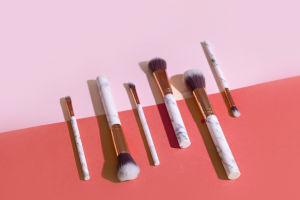As people's awareness of environmental protection and sustainable lifestyles grows, solid shampoo is gradually coming into the public eye.
This new type of shampoo not only meets daily cleansing needs but also provides a new solution for environmental protection and healthy hair care.
This article will provide a detailed introduction to solid shampoo from various aspects, including its definition, ingredients, advantages, and usage methods, to help readers better understand the charm of this product.
What is Solid Shampoo?
Solid shampoo is a non-liquid shampoo product that usually comes in block, bar, or small round ball forms. When used, it can create foam by combining it with water, thus cleansing the hair and scalp.
Compared to traditional liquid shampoos, solid shampoos typically have simpler formulations, often containing plant extracts and natural ingredients that effectively cleanse and nourish the hair.
Ingredients
Many solid shampoos use mild surfactants that effectively remove oil and dirt from the hair without causing excessive irritation to the hair and scalp. Additionally, solid shampoos often incorporate nourishing ingredients such as essential oils, herbal extracts, and vitamins to enhance their hair care effects.
For example, ingredients like coconut oil and jojoba oil can provide deep nourishment to the hair, while tea tree oil and lavender essential oil help soothe the scalp and alleviate issues like dandruff and itching.
Advantages
1. Eco-Friendly and Sustainable: Solid shampoo packaging is usually made from biodegradable or reusable materials, reducing the use of plastic bottles and minimizing environmental impact. Furthermore, due to its compact size, the carbon footprint during transportation is relatively low.
2. Portable: Solid shampoos are lightweight and compact, making them ideal for travel. Whether for a short trip or a long journey, solid shampoo can be easily packed without worrying about liquid leaks.
3. Cost-Effective: The concentrated formulation of solid shampoos means that users only need a small amount to achieve good cleansing results, effectively reducing consumption and saving money.
4. Gentle and Non-Irritating: Many solid shampoos use natural ingredients, avoiding the common chemical components found in traditional shampoos, making them friendlier for sensitive scalps. This makes solid shampoos suitable for various hair types, especially for those with dry or sensitive scalps.
How to Use
Using solid shampoo is relatively simple, but it differs slightly from traditional shampoo. The specific steps are as follows:
1. Wet the Hair: First, thoroughly wet the hair with warm water to help the shampoo lather and cleanse better.
2. Rub the Solid Shampoo: Gently rub the solid shampoo directly onto the hair or first rub it in your hands to create foam before applying it to the hair.
3. Massage the Scalp: Use your fingertips to gently massage the scalp, ensuring even distribution of the shampoo, which helps cleanse and nourish.
4. Rinse Thoroughly: Finally, rinse the hair thoroughly with clean water to remove all the foam. You can repeat the above steps as needed to achieve the desired cleansing effect.
As an emerging shampoo product, solid shampoo is gradually becoming a choice for more and more consumers due to its eco-friendliness, economy, and efficiency. Its natural ingredients and gentle formulations also make it suitable for people with various hair types. In the future, solid shampoo is expected to play a more significant role in the shampoo market, promoting a shift toward a more environmentally friendly and healthy lifestyle.


